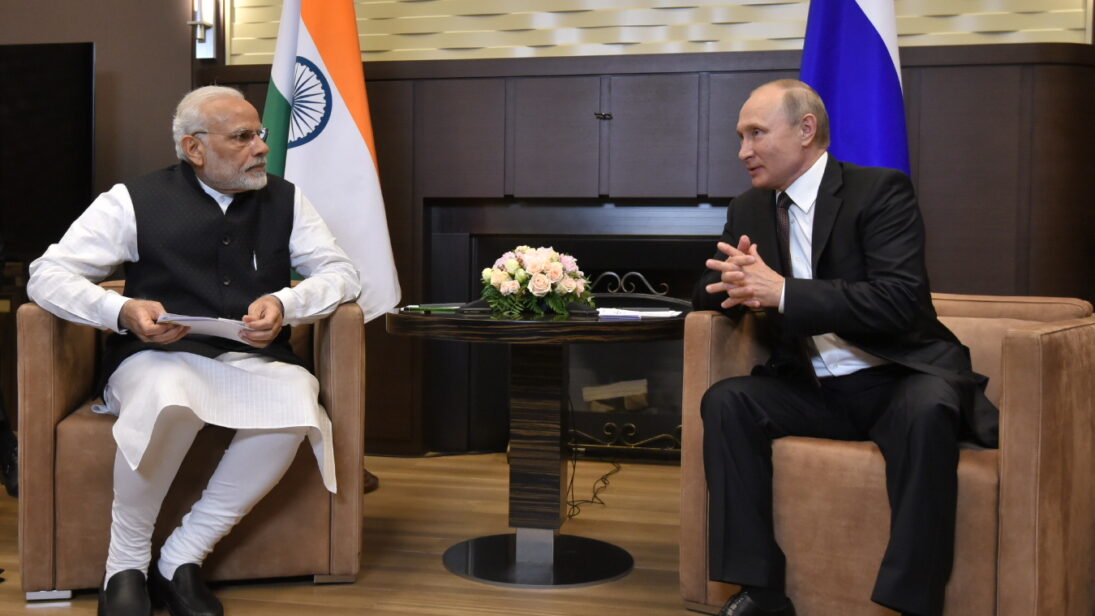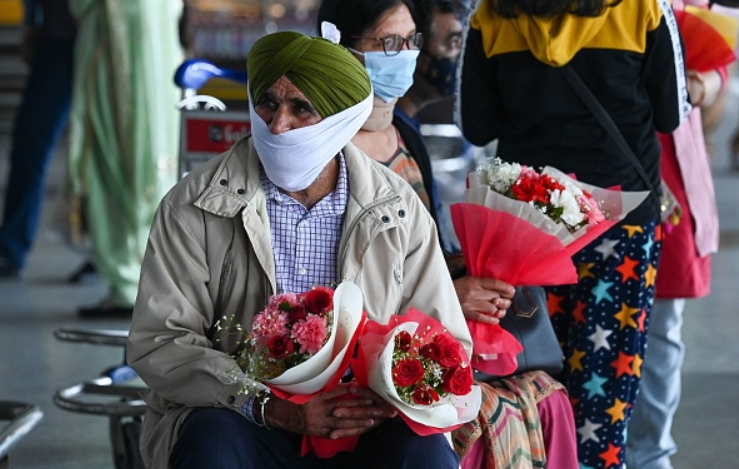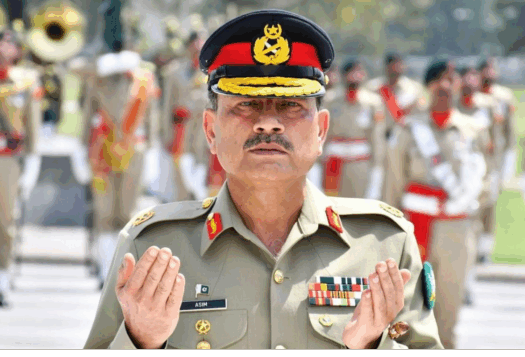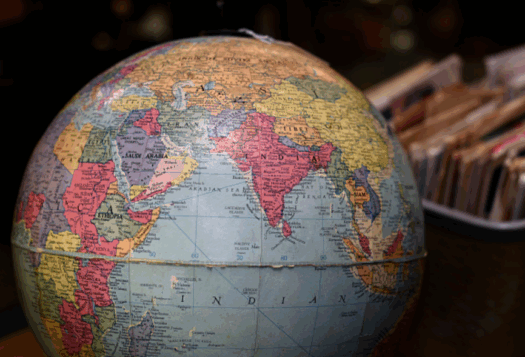
On March 2, for the third time in less than a week, India abstained from voting against Russia at the United Nations to denounce Moscow for its invasion of Ukraine. In an explanation of its vote, India supported the international community’s call for a ceasefire between Moscow and Kyiv, reiterated its belief in the territorial integrity and sovereignty of all states, and stressed the need for diplomacy and dialogue to resolve the crisis, but stopped short of condemning Russia.
While those with passing knowledge of India may find such a move by a democracy and supporter of the liberal rules-based order surprising, few informed observers of India-Russia relations would expect New Delhi to follow Washington and European states in issuing blistering anti-Russia statements and leading a drive to sanction Moscow. New Delhi is constrained by various factors in its relationship with Moscow and has unique stakes in this crisis that explain its rather muted stance so far.
New Delhi likely sees its relative silence on Moscow’s actions in Ukraine as leverage to induce Russia to moderate Chinese aggression against India, especially potential Chinese adventurism on the Line of Actual Control as the snow begins to melt in the Himalayas.
For one, our research shows that around 85 percent of India’s military equipment is of Russian or Soviet origin, and India continues to rely upon Russia for maintenance, spare parts, and other support for its existing arsenal. Technologies viewed by Delhi as critical to its national security, such as the S-400 air and missile defense system, Brahmos supersonic cruise missiles, and naval nuclear propulsion, have either been co-developed with or purchased from Moscow. Despite the strides taken in US-India defense trade in recent years, Russia remains the Indian partner of choice for new cutting-edge systems, mainly because in many instances it has been the only state willing to offer India the most advanced defense technologies. This dependence makes India liable to Russian retaliation if New Delhi does not acquiesce to Moscow’s position on Ukraine. Retaliation could come in the form of Russia withholding emergency arms deliveries, which would be especially costly for India as it continues to be in an eyeball-to-eyeball standoff with China at various points along their shared border.
Beijing and Moscow’s growing closeness is also a concern for New Delhi, a quasi-alliance which is likely to only deepen the longer the Russian invasion of Ukraine continues and as Russian President Vladimir Putin becomes more globally isolated. New Delhi likely sees its relative silence on Moscow’s actions in Ukraine as leverage to induce Russia to moderate Chinese aggression against India, especially potential Chinese adventurism on the Line of Actual Control as the snow begins to melt in the Himalayas.
India may also feel beholden to Russia for its historical political support for New Delhi, often in opposition to Pakistan. For instance, Moscow has tended to block Pakistani efforts at the United Nations Security Council (UNSC) to seek international intervention against India over the Kashmir issue. Moreover, Indian hesitance could stem too from its long-held policy of strategic autonomy and the need to maintain a multipolar world order.
And most importantly, taking sides may complicate New Delhi’s efforts to ensure safe passage for and evacuation of about 2,000 remaining Indian citizens, mostly from conflict zones in the east, out of a total over 20,000 caught in the crossfire in Ukraine.

However, despite these severe and understandable constraints, it is imperative that New Delhi glean the right lessons from this crisis and take actions to secure its interests.
For one, supporting and defending the norms of sovereignty and territorial integrity is crucial not just from the standpoint of adherence to values but also because not doing so may undermine India’s own stance vis a vis China on the border. In addition, India must be mindful of how its smaller neighbors in the subcontinent such as Nepal and Bhutan as well as partners in Southeast Asia perceive its tacit support of Russian aggression and any doubts that may sow in their minds about New Delhi’s behavior as a regional power.
Secondly, this crisis should be a wakeup call for India to reduce its dependence on Russian arms in its own interest, not because the United States or the West wants it to. For decades, New Delhi has been alarmed by the low quality of Russian arms and equipment and anxious as many systems have faced cost overruns and delays. Now severe sanctions on Russia and the destruction in Ukraine threaten to both delay delivery of new arms and equipment to India as well as impact or cancel projects to upgrade existing systems, leaving New Delhi vulnerable. Thus, this is the opportune moment for New Delhi to both accelerate its diversification to other defense partners as well as take up indigenization of defense production in earnest.
The United States can be one of these key defense partners for India, especially as both share deep concerns about the threat that China poses. However, India’s lack of overt criticism for Russian actions in Ukraine has disappointed U.S. lawmakers. This stance could threaten the bipartisan support in Washington for supporting New Delhi’s rise, and perhaps even generate pressures to sanction India for its purchase of S-400 systems from Russia under the Countering America’s Adversaries Through Sanctions Act (CAATSA). Senior Biden administration officials appear somewhat sympathetic to India’s legacy relationship with Russia and the limitations it poses on New Delhi. However, in the absence of stronger Indian statements or actions against Russia, U.S. Congress members and working-level Biden administration staff will find it harder to mobilize the necessary internal support for securing an Indian CAATSA waiver.
This crisis should be a wakeup call for India to reduce its dependence on Russian arms in its own interest, not because the United States or the West wants it to. For decades, New Delhi has been alarmed by the low quality of Russian arms and equipment and anxious as many systems have faced cost overruns and delays.
Finally, with the recent death of an Indian student in Kharkiv, another citizen injured after being caught in firing in Kyiv, and many still stuck in active conflict zones awaiting evacuation, New Delhi should be mindful that Russia’s actions in Ukraine could become a domestic political issue and result in public pressure on the Indian government to reassess its ties with Moscow.
What can India do to implement these lessons and secure these interests? It is reasonable to expect that India will continue to publicly walk this diplomatic tightrope. However, privately, India should appeal to Russia to come to the negotiating table with Ukraine, since India’s key interest is cessation of violence and safety of its citizens.
As it has done in recent days at the UN and during conversations with European leaders, India should be more consistently vocal about appealing for the respect of all states’ sovereignty and territorial integrity, especially in bilateral calls and readouts with Putin and Ukrainian President Volodymyr Zelensky.
Finally, Indian officials would be well-advised to reach out to members of the U.S. Congress to explain New Delhi’s position and the diplomatic constraints it faces due to its reliance on Russian arms, with an eye on a potential decision on CAATSA sanctions. For their part, the Biden administration could explore a large Foreign Military Financing arms sales package for India that would begin to reduce its dependence on Russian arms and allow its strategic choices to be more independent of Russia in the future. To give these U.S. officials internal political support to advocate and prepare this package, India should indicate it will more substantively engage with the existing U.S. F-21 fighter jet offer, and move to expeditiously conclude Predator drone negotiations.
India’s provision of humanitarian aid to Ukraine and criticisms of Russian conduct in its statements explaining its decisions to abstain from UNSC votes on the issue are welcome moves. Nevertheless, in his recent book detailing the logic and goals of Indian foreign policy, Indian External Affairs Minister S. Jaishankar astutely recognized that “India cannot give any other nation a veto on its policy options. This is particularly so in a world when all significant players are trying to be as open-ended on their own choices. Nor is there a basis to suggest that a modest Indian global profile will somehow be rewarded by polities who are intrinsically enamored of strength.” Drawing from New Delhi’s own foreign policy playbook, Jaishankar himself and other Indian decisionmakers should heed this rationale for bolder actions against Russia.
***
Click here to read this article in Urdu.
Image One: India Ministry of External Affairs via Flickr
Image Two: PRAKASH SINGH/AFP via Getty Images


